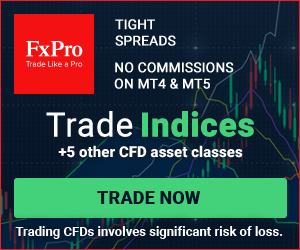Cynthia Kase is a famous Commodities and Futures trader, president of the Kase & Company Inc. She wrote a couple of books on technical analysis and also did conferences and training seminars for traders.
Forecasting Methods
She uses various technical tools in combination with sound statistical analysis to arrive at conclusions about market turns and direction.
The primary method she uses to assess the market state is Elliott Wave Analysis, in conjunction with Fibonacci expansions and retracements. She complements the analysis with pattern techniques: Head-and-shoulders, double tops and bottoms, triangles and coils, candlestick patterns such as Doji, Morning and Evening star formations.
Permission filters
She advocates the use of two kinds of signals to enter the market. The first signal is a Permission Filter The second is the actual entry signal.
She has developed her custom permission filter that she calls The Kase Permission Stochastic, but to the FX trader, there are other more common solutions such as a MACD oscillator, a moving average or simple trend evaluation through price action in a higher time frame. The example below uses the daily chart MACD to define long and short segments on the CHFJPY cross pair to be traded using the 4H or 1H charts.
Chart 1 - MACD Permission filter on the CHFJY 1D time frame
The Permission rule is easy: Traders can only take signals that go in the same direction signalled by the Permission Filter.
Properties of Markets that are good to Forecast
Cynthia Kase says that forecasting the markets is linked to how mass psychology affects market action. People imagine or learn to recognise patterns, and their reactions is what creates the price action.
Some markets are more simple to forecast than others. The knowledge the trader may have about a particular market is important to improve the chances of success. Mrs Kase, besides trying to know and understand the markets she trade, knows that certain market characteristics make them easier or more challenging to forecast. Her advice to traders is:
1.- Look for a mean-reverting market. That means the market moves in and out of a kind of average or norm. As a result of this, the evaluation of overbought and oversold prices can be made more consistent and reliable.
2.- The market shouldn’t be too much influenced by external events, such as political decisions, whether, or purely random causes.
3.- Liquid and active, and
4.- Not dominated by technical traders if possible.
The Six Kase Behavioral Laws of Forecasting
1..- The Goal is Profit, not Ego
The objective is not being right about the market but making money. Many traders forget this and get dominated by their bias about the market.
She contends that many technical traders forget that any correct assessment of the market has to be done within a clear trading strategy. That strategy should use the forecast. When the signal is in the direction of the trend, it can be taken. When it is in the opposite direction, it means the market is in a corrective phase and wait.
2.- The Objective is trading profitably, not writing a thesis about the World situation.
She uses the Elliot Wave Analysis to assess the overall picture of the markets she trade. But she recognises that the Theory is not, in her words “carved in stone”. She thinks that sometimes the debates generated around the EWT are losing the goal. By making it simple and focused on the objectives and risk control is more important than the irrelevant discussions about details.
3.- If Wrong Move On
Perfection is the enemy of success. The only way not to be wrong is to stop trading. Therefore, we should set our trade parameters and get out if the invalidation level is hit.
4.- Have confidence in Yourself.
Do not give too much credit to the opinion of others. 80% of people lose money in the markets; therefore, why to give credit to others if there is an 80% chance of them being wrong?
We should remember that the market will tell us everything we need to make decisions.
5.- Do not read news nor Watch TV discussion of the markets you trade.
That goes with the 4th rule. Do your own assessment based on price and volume. Except for the scheduled economic events that may shatter price, rumours and chatter always lag the market and is already discounted in the current price.
6.- Plan your trades and strategies when you’re out of the market
Logic and rational thinking is key when planning a trade. Plan the trade and then follow your plan with discipline. The plan must include all the possible circumstances. That way the trader has a clear decision sheet for every trade that he must follow as if he was a soldier.
Reference: Trading With The Odds, Cynthia Kase, McGraw-Hill, 1986




